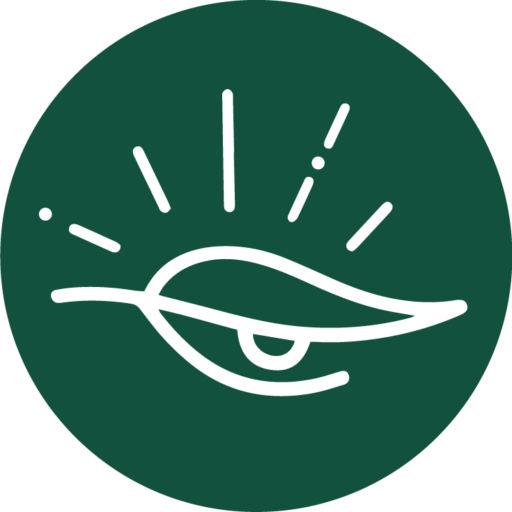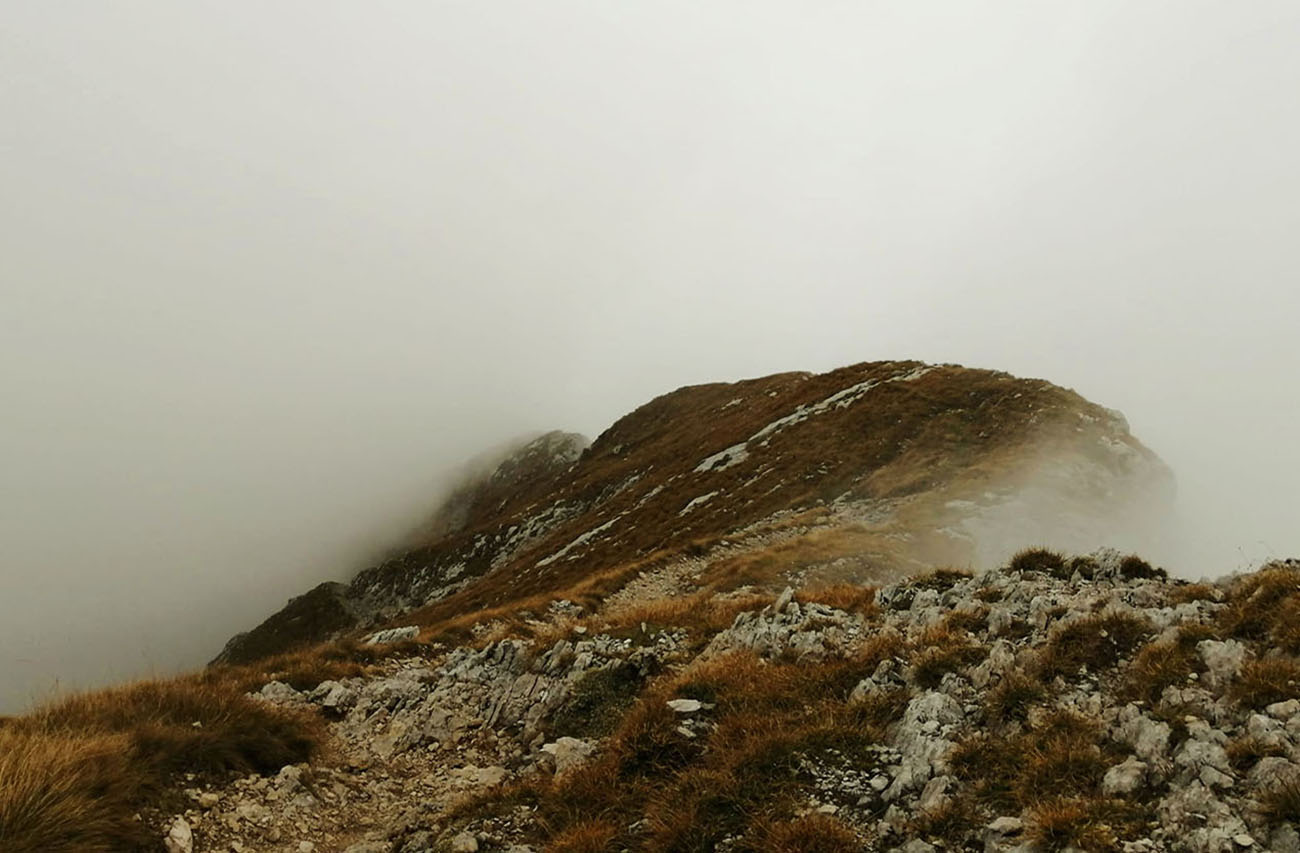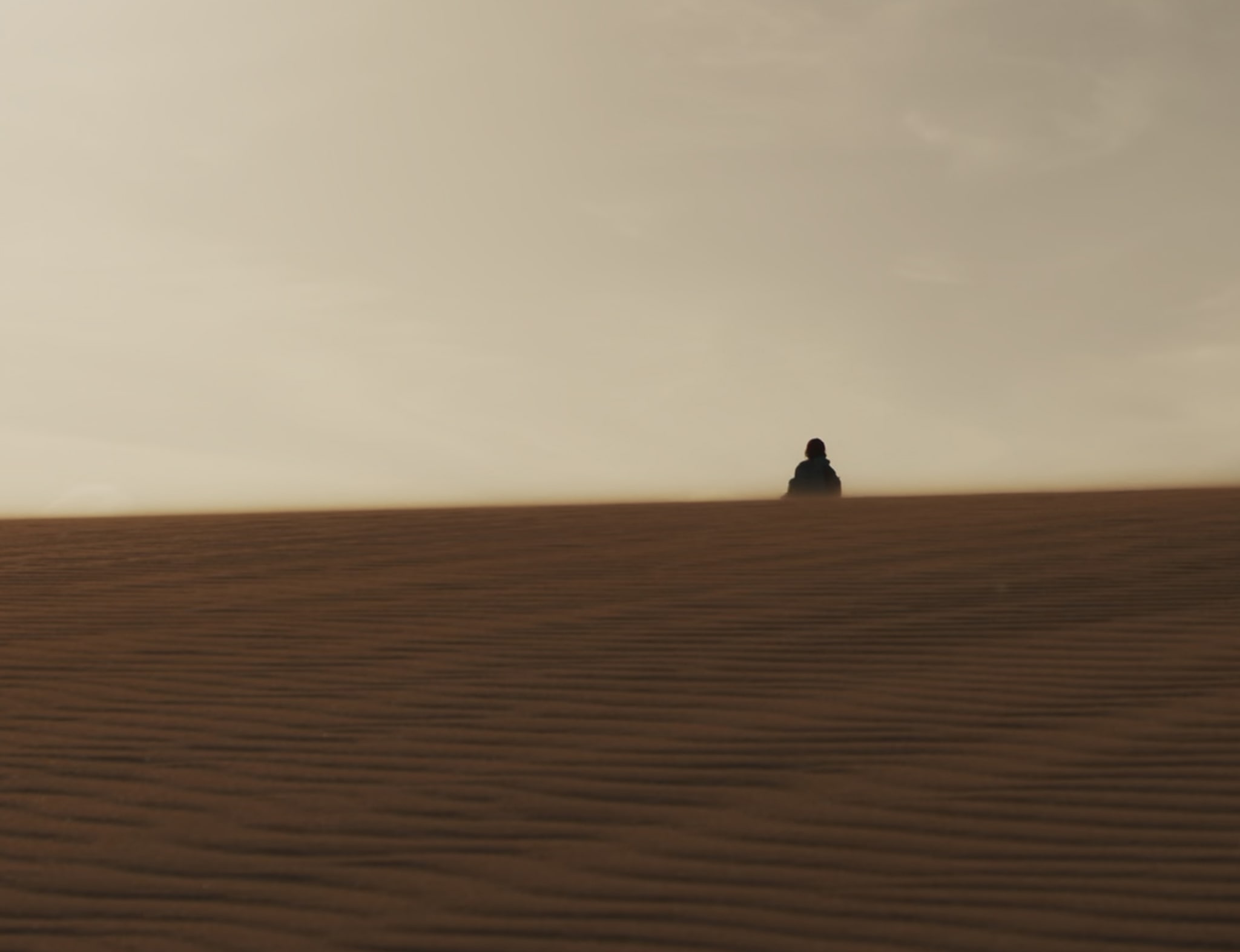There’s a lot of understandable anxiety but also fear due to the urgency of climate change, so we want to create an optimistic environment for the exchange of ideas. We encourage artists to connect with nature through their existing practices.
Raki Nikahetiya, co-founder, sā Ladakhsā Ladakh: A Catalyst to Empower Minds at 3,600m Elevation
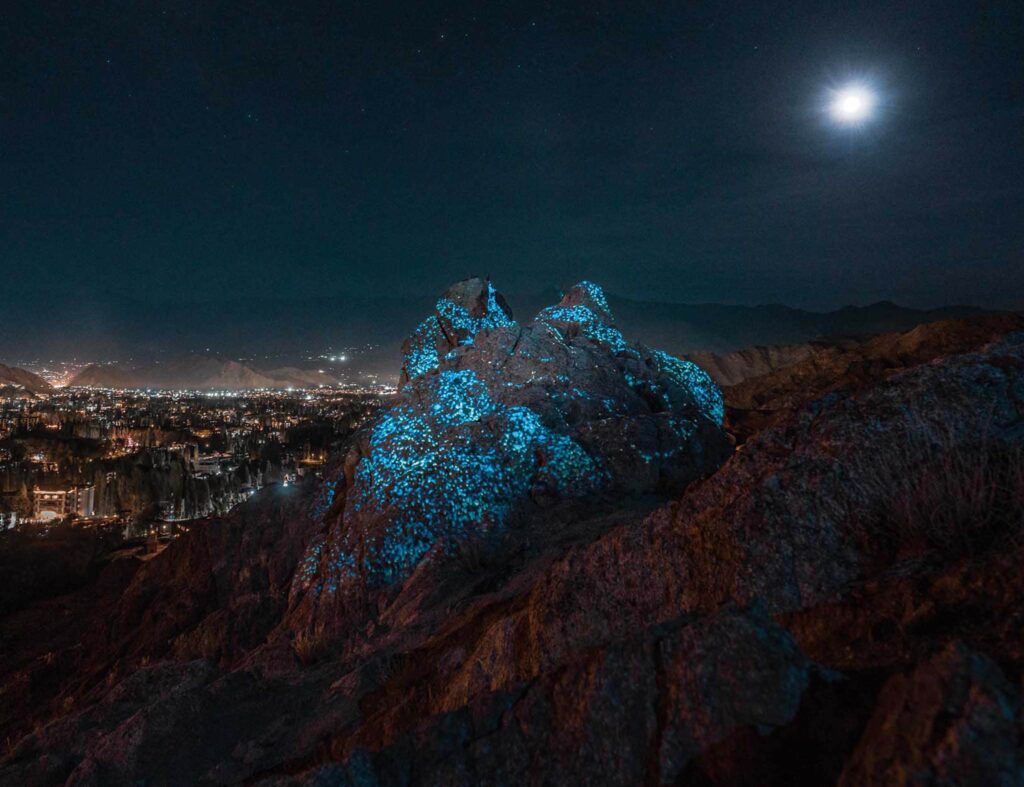
‘sā Ladakh’ is Asia’s highest-ever contemporary land art group exhibition, at 3600m elevation in Ladakh, India, focusing on climate positivity, culture, and community. The collective was founded in August 2023 by Austrian-Sri Lankan contemporary artist Raki Nikahetiya, Ladakhi climbing pioneer Tenzin ‘Jammy’ Jamyang, and Indian interior designer Sagardeep Singh.
This project brings together people from all walks of life: artists, organisations, schools, and communities from India and abroad, serving as a catalyst to empower them to make positive change to our climate emergency and to the environment.
We interviewed the creators of sā Ladakh to understand their vision and their relationship with ‘sā’, meaning soil in the Ladakhi language.
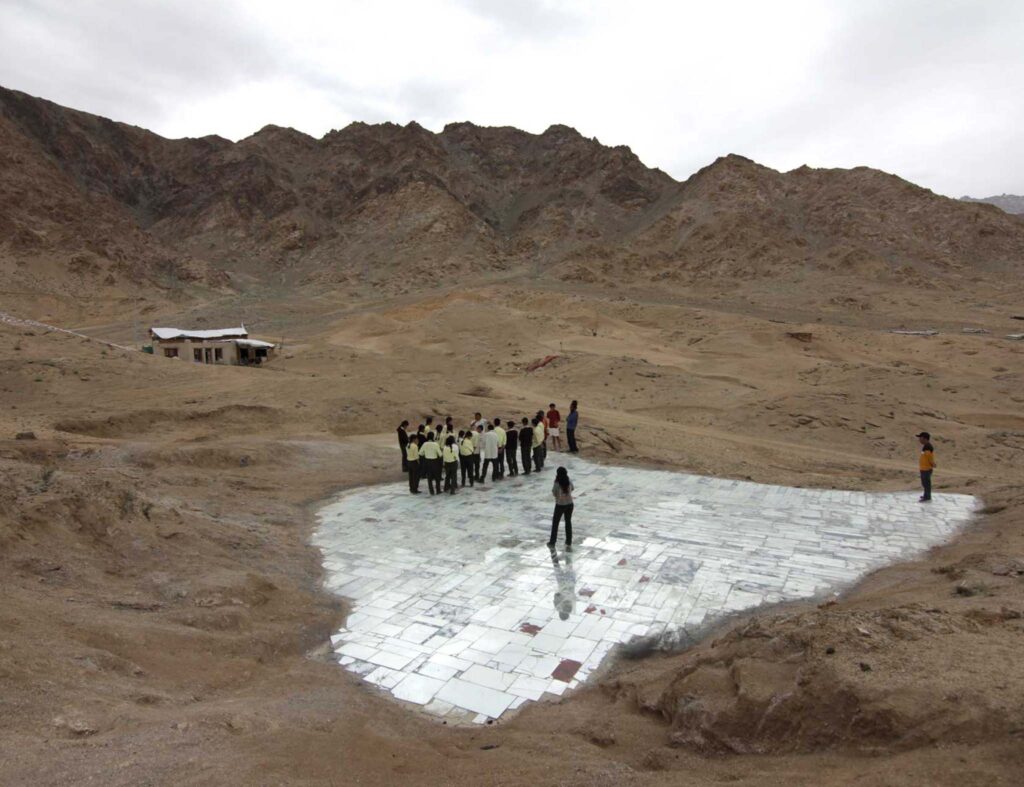
The name of the exhibition, ‘sā’, means soil in the Ladakhi language. What’s the story behind this name, and how do you interpret the soil through land art?
The name was selected as we reflected on land art and our approach to it. What is land? Land is made mostly out of soil. Soil is significant to us—not only humans but all living beings—because it defines who we were, who we are, what we eat, how we evolve, and who we become. As such, we selected ‘soil’ as the title, but in Ladakhi in respect of the place.
Raki Nikahetiya, Co-founder
“We, along with our crucial Ladakhi partners such as Ladakh Arts and Media Organisation (LAMO), Local Futures, and Disko Valley Bike Park, share a deep love for the land. We aspire for people to connect with each other and evolve their cultures together, sustainably.”
Tenzin Jamyang, Co-founder
There is a gap that has occurred between the land and the people. This has been a reason for climate grief. However, sā delves into the interpretation of ‘climate optimism’. How do you aim to bring a sense of lightheartedness while pointing at the seriousness of climate change?
Tenzin Jamyang, one of the co-founders of sā Ladakh and a well-recognized rock climber who also leads Suru Fest, critically draws our attention towards climate change in high-altitude regions. He shares firsthand experiences and motivates the entire team, highlighting art as a thought-provoking and long-lasting medium for information, education, and awareness among local, next-generation, national, and international communities in a sustainable manner.
Learning from Ladakhi communities, we have realised the friendly relationships people share with each other and with their fragile land. We never want to create havoc around climate change. As a community, we practise harmony and support, believing that we are there for each other in times of change, and together, we can make a difference.
Smalika Jain, Communication Lead
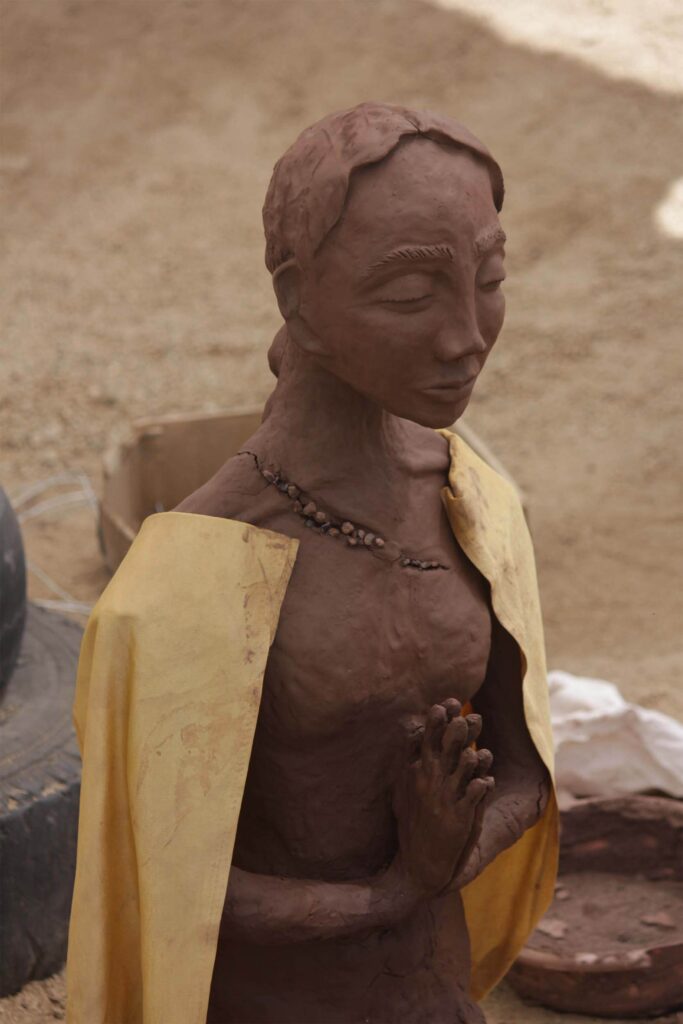
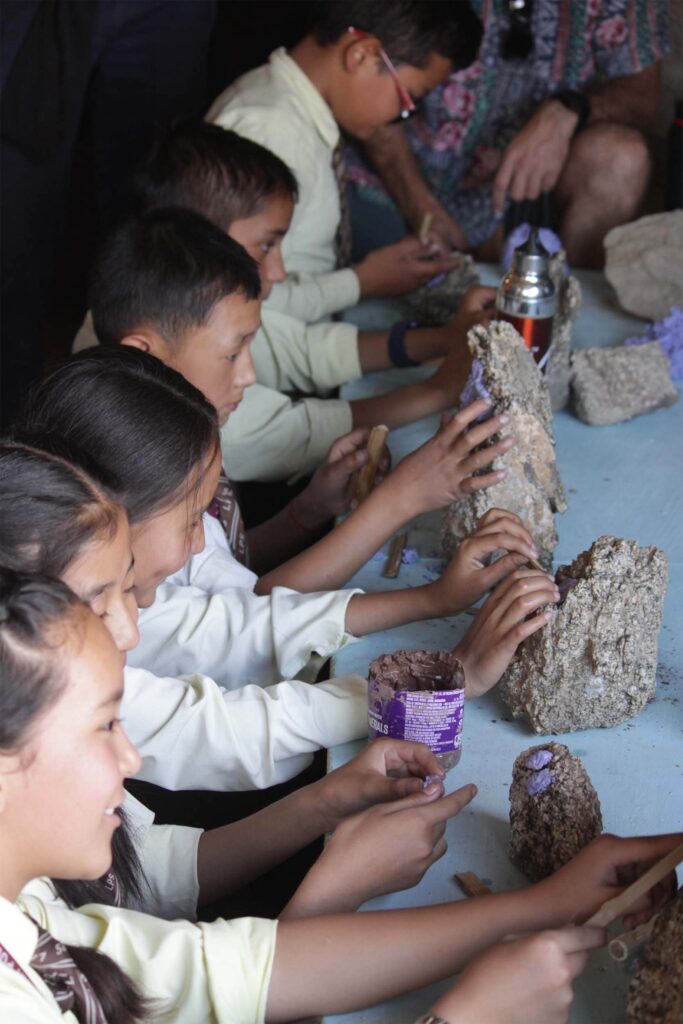
The beauty of Ladakh is unparalleled. What role do you think beauty plays in capturing and transforming the attitude of the audience?
Certainly, Ladakh’s beauty is unparalleled, but it’s challenging to express in words what makes Ladakh beautiful.
With land art and sā Ladakh, the audience is intimately connected to the art, the artist, and the canvas. They become active participants in a collaborative approach, and we don’t limit their diverse perspectives and subsequent attitudes towards art.
For instance, students from local schools visited one of the exhibitions and, together with the team, interpreted the art, touched it, and closely explored it without many barriers. Later, during workshops, they created things inspired by the climate, local stories, and their personal experiences from the exhibition.
“We realised that it’s not perfection we’re aiming for, but a sense of belonging for every element of nature, creating beautiful memories, and thus a personal transformation in attitude.”
Sagardeep Singh, Co-founder
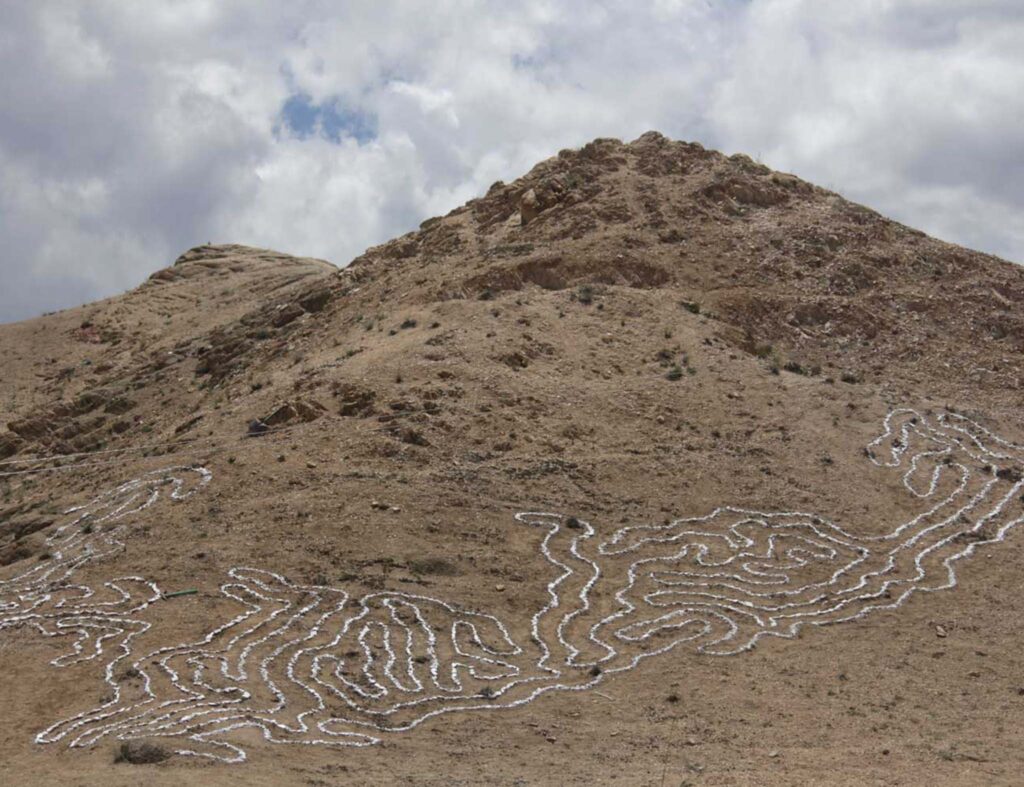
“There’s something about the land, the culture, or perhaps something unknown or hidden that stirs something within. This Himalayan desert, with all its vulnerabilities yet eternal bliss, captivates one’s spirit.”
Tenzin Jamyang, Co-founder
Creating a movement without causing disruption requires diligence. Do the communities in Ladakh feel included in this new wave?
sā Ladakh always aims to create a community that is conscious and optimistic about climate, culture, and humanity. That’s why our primary members include Ladakhi organisations and groups from diverse areas, as well as individuals from all walks of life.
Ladakh Arts and Media Organisation fosters regional yet diverse art practices through various means and encourages youth members to engage in art and promote their rich culture. Local Futures – Ladakh educates us and connects us with rural and untouched locations in Ladakh. They welcome us to serve and engage with schools, students, and traditional farming practices, motivating us to promote mindful tourism. Disko Valley Bike Park, an environmentally friendly 22-acre land at an altitude of 3600m, organises bicycle adventures and hosts sustainable biking festivals, offering India’s highest jumps. These three crucial partners joined hands with sā Ladakh to create a confluence of sports, arts, sustainability, and experiential education.
Apart from our partners, sā Ladakh prioritises workshops and artworks by more Ladakhi artists and supports them on other occasions and platforms as well. We hope to build a larger and more positive community together with Ladakhis in the future.
Smalika Jain, Communication Lead
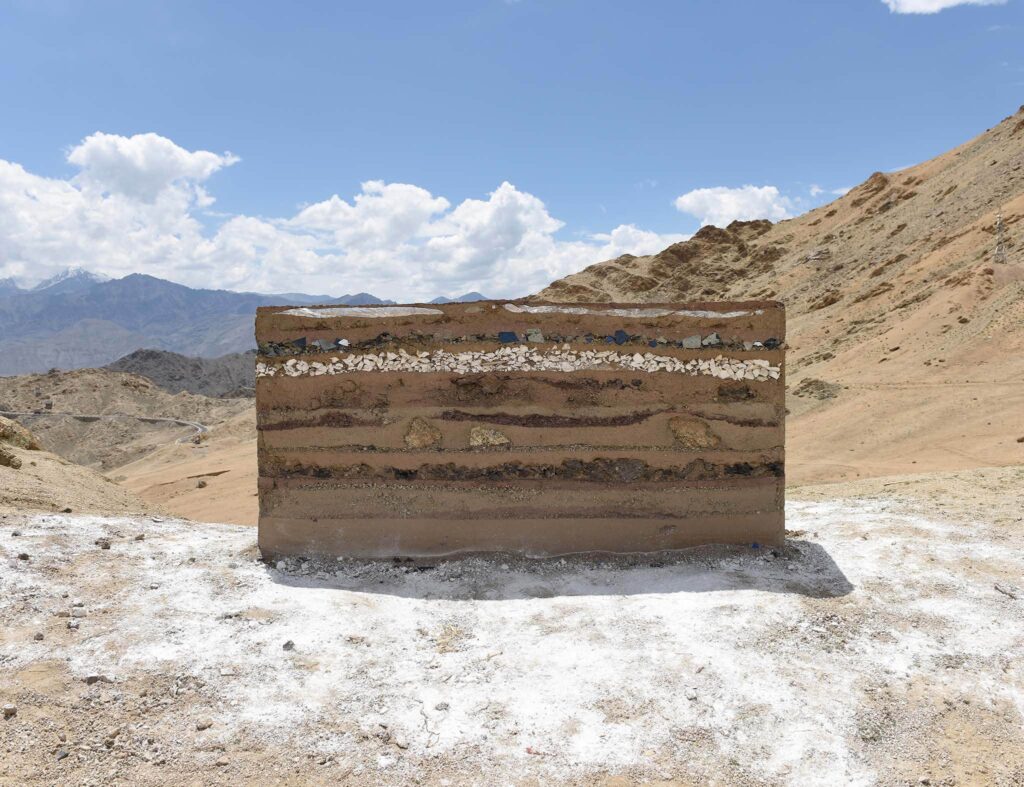
What drew you to one of the most unique landscapes in India to build sā?
Something clicked deeply when I went to Ladakh for the first time with my wife. The scenery had to be the reason. It is an unearthly experience. It is a piece of landscape that gives you a sense of immensity that makes you feel little while you are there.
I grew up in Austria and for me, it brought back memories and a long-lost connection to high-altitude landscapes, spending childhood summers in the beautiful Austrian Alps with my family and the comforting feeling of a newfound home. Jammy, Sagar and I have our own reasons why we love Ladakh, but for me subconsciously I think it was that distant childhood memory – the mind trying to find similarities to home in an unknown landscape – what motivated me to work here. Ladakh is a home away from home.
When we planned the project the Disko Valley Bike Park in Ladakh provided us with the space and possibilities. We realised that twenty-two acres were a significant amount of land for three people, so we involved individuals, including young people and artists, as well as cultural and media organisations, Dr. Monisha Ahmed from LAMO, and an artist by the name of Jigmet Angmo. Since we came from diverse backgrounds, a sense of community was essential to the success of our endeavour.
Anything political or activist was not what we intended to focus on; the arts were. We prioritise climate optimism, creating a constructive narrative about climate change, and connecting people through art.
Raki Nikahetiya, Co-founder
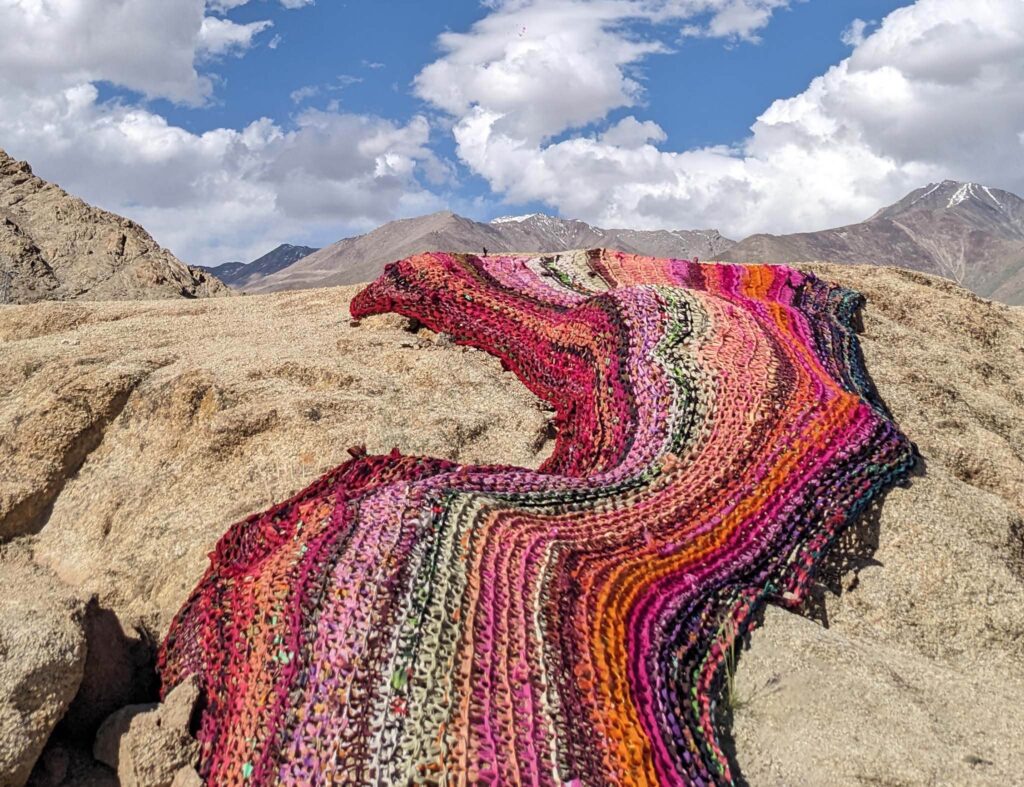
I found Anshu Singh’s ‘River of Sweat’ significant in size and vibrancy. Do you prioritise the preservation of non-perishable works of art that can have a lasting impact?
These works went back to the artist and will be exhibited elsewhere going forward. For the first exhibition, preservation per se is done through photography, and we believe in a digital exchange where one does not have to travel to be in space to experience the art but can visualise through the digital realm. Not being there means not feeling or experiencing it fully, but as you pointed out, her work created an emotion for you as a viewer, even if only digitally. This we would like to evolve on bringing an experience home, cutting travel but engaging the viewer to reflect on the same on one’s own surroundings and landscapes.
Smalika Jain, Communication Lead
What is the current state of previous works of art in Disko Valley, and what is your focus for the second edition of sā, in selecting works of art?
The works have been either re-used as building materials, sent back to the artist for exhibition purposes, or, in very few cases, remain at the site for the use of Disko Valley and its visitors. Edition Two of sā Ladakh aims to uphold the same spirit and principles as Edition One with a thought to promote mindful engagement among Himalayan national, international and digital lives to enrich the blooming generation and communities in Ladakh. The theme of the second edition is ‘Future of Immersive Land Art/Immersive Land Art and the Future’. For edition two, the works will be more ephemeral, and you can find more information at the open call at https://www.saladakh.com/opencall.
Smalika Jain, Communication Lead
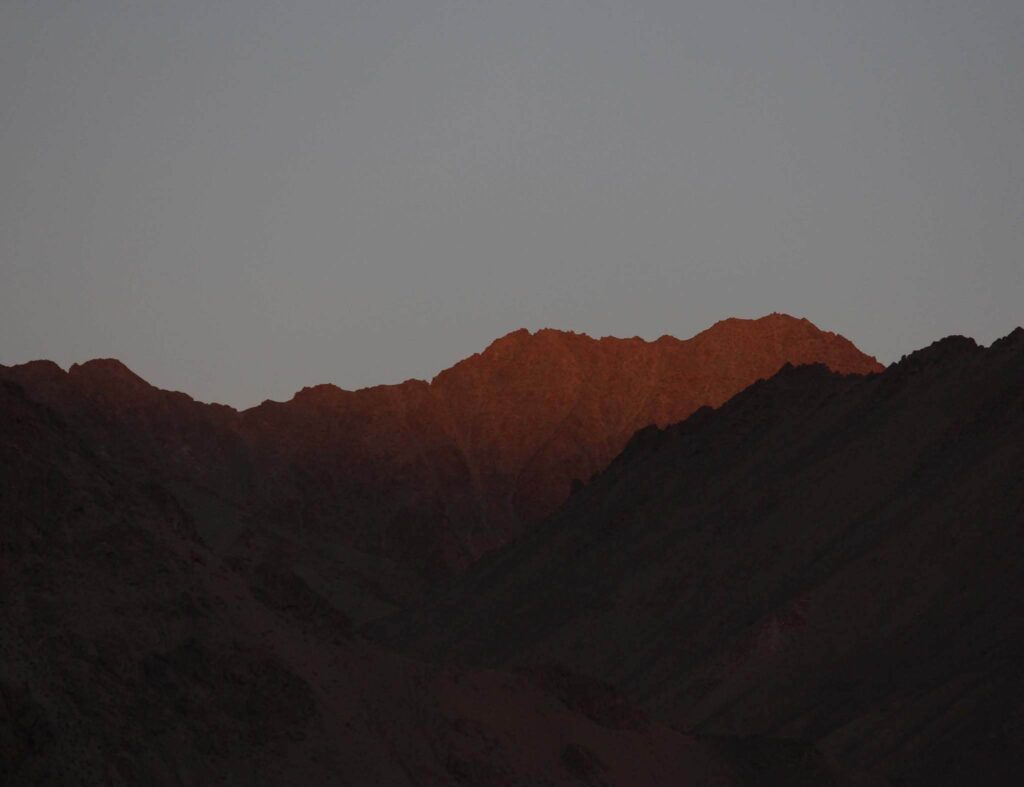
How sustainable was the last edition of sā in terms of organisation, planning, and valuing natural resources?
It’s a continuous learning curve. For the first edition, it was as sustainable as we could have made it. Many questions came up after reviewing the first edition – as you do things, you start to also realise things. It served as a concept proof. We practised sustainability in the sense that we wanted to reuse specific resources. We could have done better in some areas, that’s what it means to move forward as a result of learning. Starting something for the first time that nobody has done before can’t be flawless so we felt that the only way forward was through questioning, cooperation, peer review, and learning from the experiences of people from all walks of life. The second edition will look at the whole lifecycle of an artwork; from sourcing to creation to what happens after the exhibition, and how it impacts the community. We collaborate with various stakeholders, in addition to artists who have something to say. Hence, it involves bringing communities together, embracing each other, and engaging in a critical but judgement-free dialogue.
Raki Nikahetiya, Co-founder
What kind of movement are you creating on Earth? Would you say your rhythms are in sync with the rhythms of nature?
We try to inspire a cross-cultural, multi-generational, multi-disciplinary dialogue and exchange, appreciation for the natural world, fostering creative solutions, and empowering individuals and communities to become catalysts for positive change concerning climate change and the environment through art.
There’s a lot of understandable anxiety but also fear due to the urgency of climate change, so we want to create an optimistic environment for the exchange of ideas. We encourage artists to connect with nature through their existing practices.
Therefore, we are working around a concept we call Environment Conscious Art – so art, which is:
Created out of recycled, renewable, biodegradable, reusable material that doesn’t leave any negative impact on the physical environment.
Art that is sustainable, can be repurposed or re-utilised by community members, and is even better sourced from local spaces.
Art that can engage people and sensitise them to climatic solutions at local and global levels.
Art that also obeys diversity and inclusion. Welcoming everyone and anyone, signifying a symbiotic relationship with lives and conveying a story.
We believe that when people from diverse walks of life come together, they foster a positive and collaborative culture that builds a diverse and harmonious community functioning in sync with nature.
Raki Nikahetiya, Co-founder
Interview by Vanshika Agarwal
